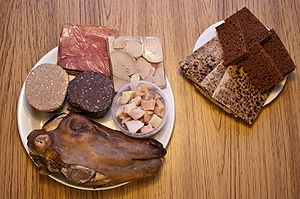Newsletters

How Icelanders survived the harsh winters
Þorri (Thorri) is the Icelandic name of the embodiment of frost or winter in Norse mythology. The month of Þorri, in essence from latter January to Mid-February, is one of the coldest and harshest of winter. For many centuries, Icelanders had to find a way to preserve the food available to them. Meat and fish are either soured in whey of dairy, fermented, salted or smoked.
The old Icelandic menu reflects some of the most tried-and-true methods of food conservation, which of course was the key of making it through an Icelandic winter. Nowadays, Icelanders do it to keep in touch with their heritage and get-together with midwinter celebrations, although they are consuming less and less and more modern cuisine is taking over.
The first day of Þorri is Bóndadagur (Husband’s day) which always is celebrated on a Friday in the 13th week of winter.
The month of Þorri is also the time for Þorrablót, a traditional feast. Some of the traditional food of Þorrablót includes: lamb’s head (svið); smoked lamb meat (hangikjöt); ram testicles (hrútspungar); blood sausage and liver pudding (slátur); Rye bread (rúgbrauð); and dried fish (harðfiskur). To top it off, fermented shark (hákarl) which smells like a very mature French cheese but has a strong fishy taste, is something no one forgets eating. It is swallowed with Icelandic snaps (Brennivín).
Verði þér að góðu, or bon appetit!